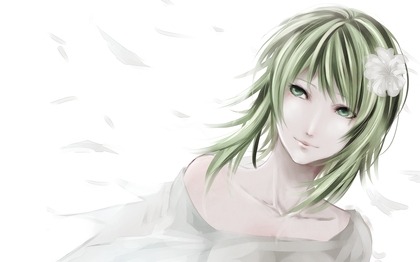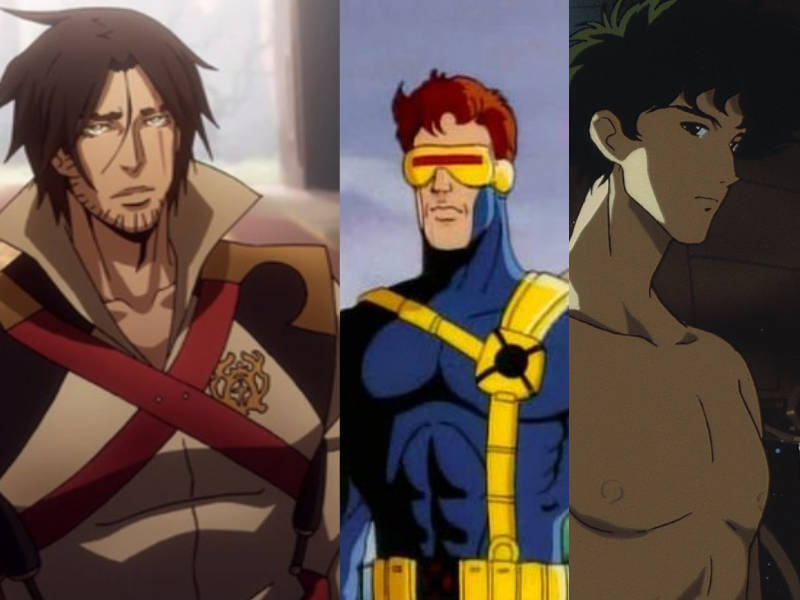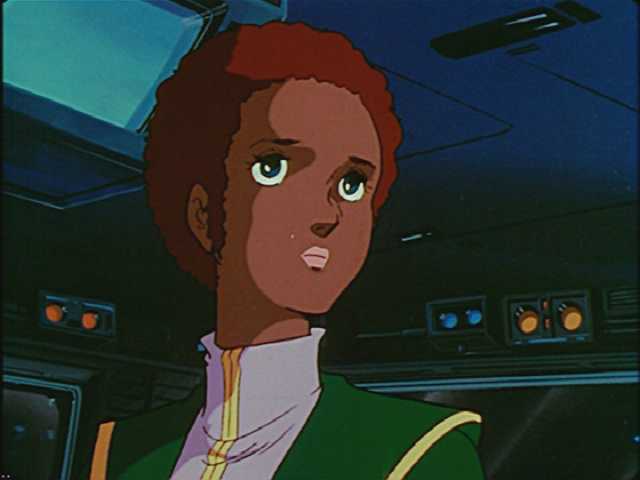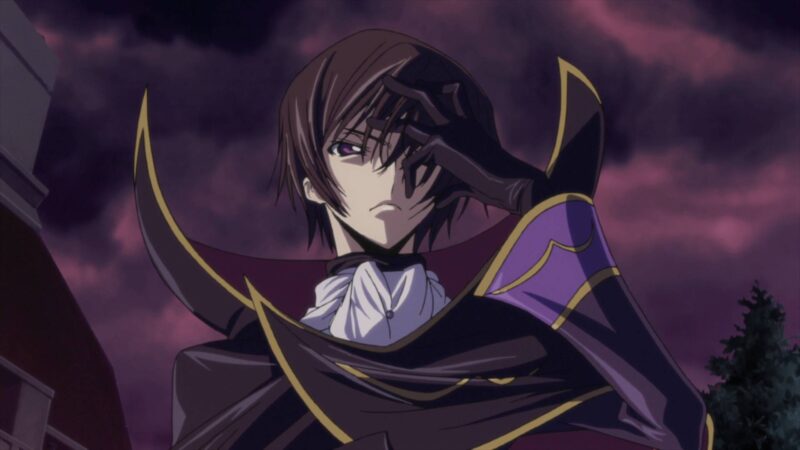
As I watched Code Geass when it came out around 2007 on Adult Swim. I was still relatively new to anime at the time. I remembered the show as a rush of twists. Well, after so many years, I surmised I would’ve forgotten most of the plot. The lanky character designs of CLAMP stood out against recent character designs, and the angular face designs contrasted against the post-moe designs. Code Geass, and other anime from the early 2000s, had a different design pattern than today’s anime. Back then characters had more pointed faces and eyes. Bodies were also more angular, but at the same time, as you watch through that period, you can see the transition into the more rounded, softer designs we have in the 2020s.
So a brief summary: Lelouch, a high-school student and exiled son of the Britannia Emperor, decided to bring down the heartless empire that caused the death of his mother and the blindness of his sister. His goal was nothing short of remaking the world. When a mysterious girl named C2 entered his life and granted him Geass–the power to make anyone obey his command, Lelouch set off on the destructive, bloody path to his goal.
Many themes layered Code Geass:
- The son trying to avenge the sins of his father.
- The question of means versus ends.
- What does loyalty really mean?
- Human instrumentality.
- The question of suffering and war.
- What does it mean to believe in someone?
As a mecha anime, Code Geass centered around war and has many fights between humanoid mechs. War sequences played out like giant games of go, although the story tried to equate war with chess. Chess was a little too basic for the surprise tactics (the ideas were taken from history) Lelouch and his enemies employed. Also as a mecha anime, Code Geass delved into some metaphysics that muddied its already complex plot. The mecha genre can’t avoid delving into metaphysics and even spiritual themes. This acts as a contrast to the genre’s heavy focus on technology and the role it plays in war.
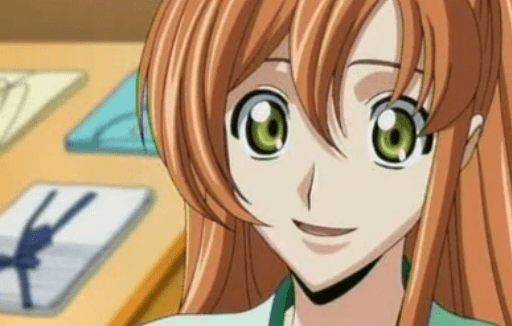
Speaking of plot, Code Geass had many twists in its mapped plot. Many of the twists came from character personalities. Upon my revisit, a few of the twists felt contrived. The foreshadowing necessary either wasn’t there or wasn’t as developed at the other twists. The high school antics the story offered as a reprieve served as a microcosm for the greater conflicts. The story examined how the battles and relationships effected the friend group, particularly as members die. Members reacted differently to events, most attempted to hang on to the past even though they knew it wasn’t possible to return. The video game Fire Emblem:Three Houses had many similarities if I allow recency bias to do its thing.
Most of the twists and turns focused on characters changing sides. Code Geass fell apart a little in this regard. Many times in the plot a character or squad would shift allegiances when they lack the upper hand. Eventually, they ended up cornered and face the consequences, but in reality, they would not have been able change as often as they did. People would distrust them and even kill them sooner. Of course, human instrumentality — viewing people as tools–came into play here. Many of these characters presented useful skills for both sides, but how useful could those skills be when the sword kept twisting in your hand? Most historical military situations preferred a more reliable sword that didn’t try to bite you back.
Code Geass wasn’t afraid to kill characters to shake up the plot. These deaths rippled across the story and remaining cast. Remember, this anime came out long before the Walking Dead TV series and Game of Thrones, which normalized the death of main characters in American TV series. Sometimes, the deaths in Code Geass didn’t impact the subcharacters as much as they would have. Of course, 50 episodes required dropped threads to tell the story. Many characters suffered from compression of their arcs, leading to rather sudden turns of loyalty. With a cast as large as Code Geass, it was inevitable. A large casts can hurt story telling because there’s limited time to flesh out the characters. but in a war story a large named cast remains preferable to a bunch of nameless extras. Kallen, for example, is interesting enough to carry her own series even though she’s roughly sketched. She stands as one of the best supporting cast.
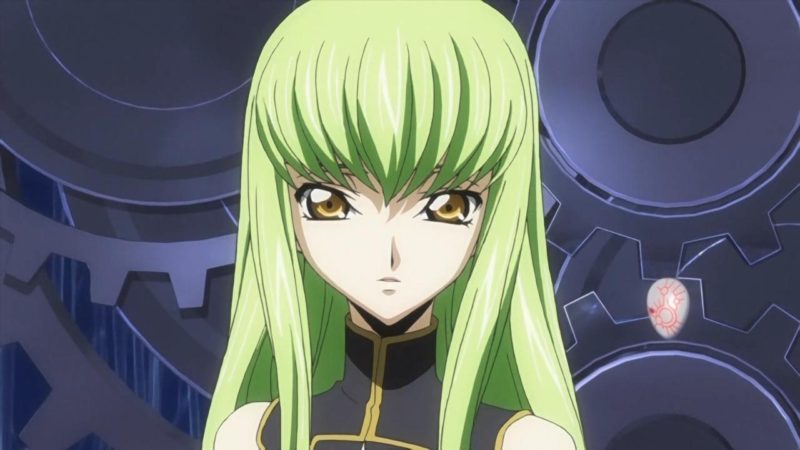
I wished more time was spent on the relationship between C2 and Lelouch. C2 interested me the most of all the characters. While we saw her backstory, I wished for a gradual reveal and just more screen time for her. Her complexity contrasted and felt deeper than, for all its intelligence, Lelouch’s teen angst. She provided some counter balance to it but not enough. Lelouch offered a welcome change from the tired bonehead protagonist. Lelouch thought and responded, planning far ahead, often without regard to the human consequences. He straddled the line between hero and villain, which made him interesting. The teen element of the story, while fine, left me wondering how the story would’ve played if all the characters were older and more seasoned. But that’s my “old man” coming out. Everyone wants to see themselves in a story. Code Geass‘s main weakness was the compression of character arcs. The cast was a little too large. But nonetheless, I enjoyed the revisit. The story sucked me in, and fortunately, I remembered only a few of the twists. The plotting kept the story exciting even with its character weaknesses. Lelouch remained an interesting protagonist as you watch him slide further into the idea that ends justify the means. He remained little different from his father until the end. Lelouch’s friend Suzaku provided a good foil for his character. In fact, Suzaku’s arc ran reverse of Lelouch’s arc.
I enjoyed how Code Geass handled war and troop movements. The history geek in me wanted to know more about the logistics Code Geass glossed over. Supply lines, such as food, fuel, ammunition, cooking and cleaning logistics, win or lose wars more often than the actual violence. While not as complicated as the Gundam series, Code Geass offered more action and easier access. I recommend you give it a watch or a rewatch. It holds up well and offers a contrast in style to the post-moe designs we have today.
As I work through my revisit list, I noticed how anime’s design styles shift with each decade. The shifts happen slowly; you can see the later design elements foreshadowed in that decade’s designs. Anime design is a gradual process that leads to a peak representation that you can point to and say “this was anime in 2000 or 2010 or whatever era”. Design languages are cyclical, so while moe designs will influence future styles, eventually the style of 1970s-1990s and the early 2000s will cycle back, informed by all the shifts in taste since then. When they do, people will see them as new. Fashion works in a similar way, as I’m reminded by the high schoolers who dress like its the 1980s. But this returned style isn’t exactly 1980s. There’s been too many other changes that inform it. So too with manga and anime art designs. It will be interesting to see how the art cycles.
